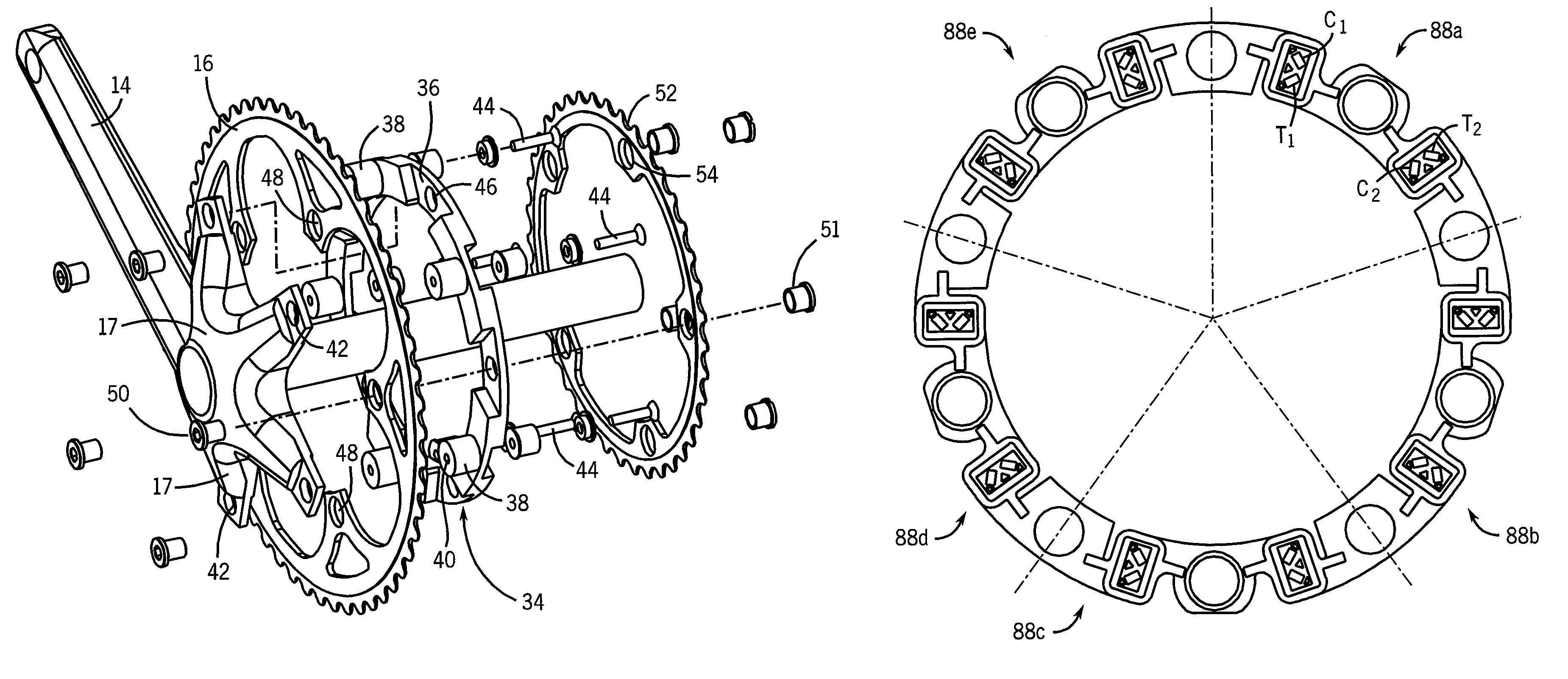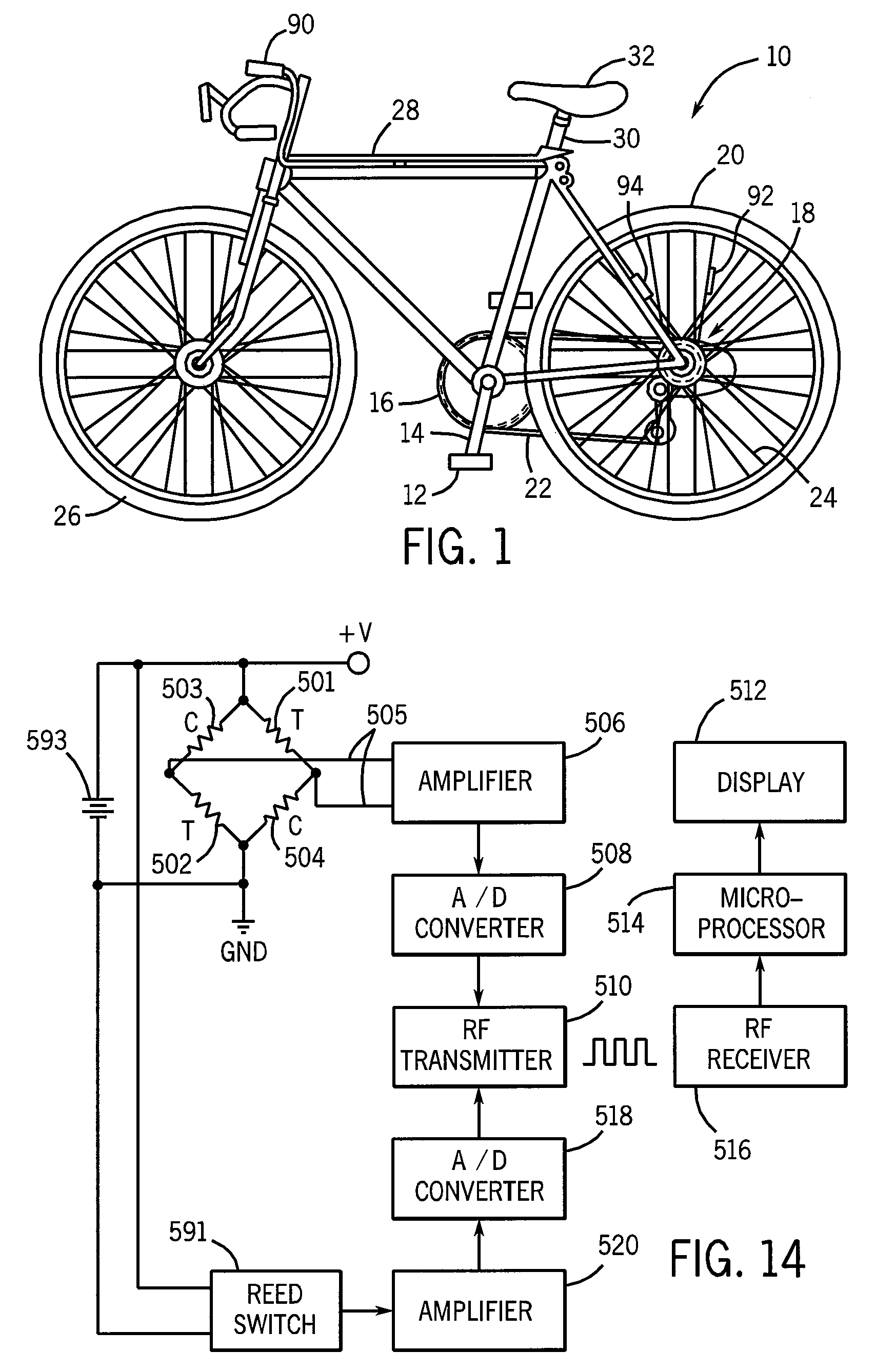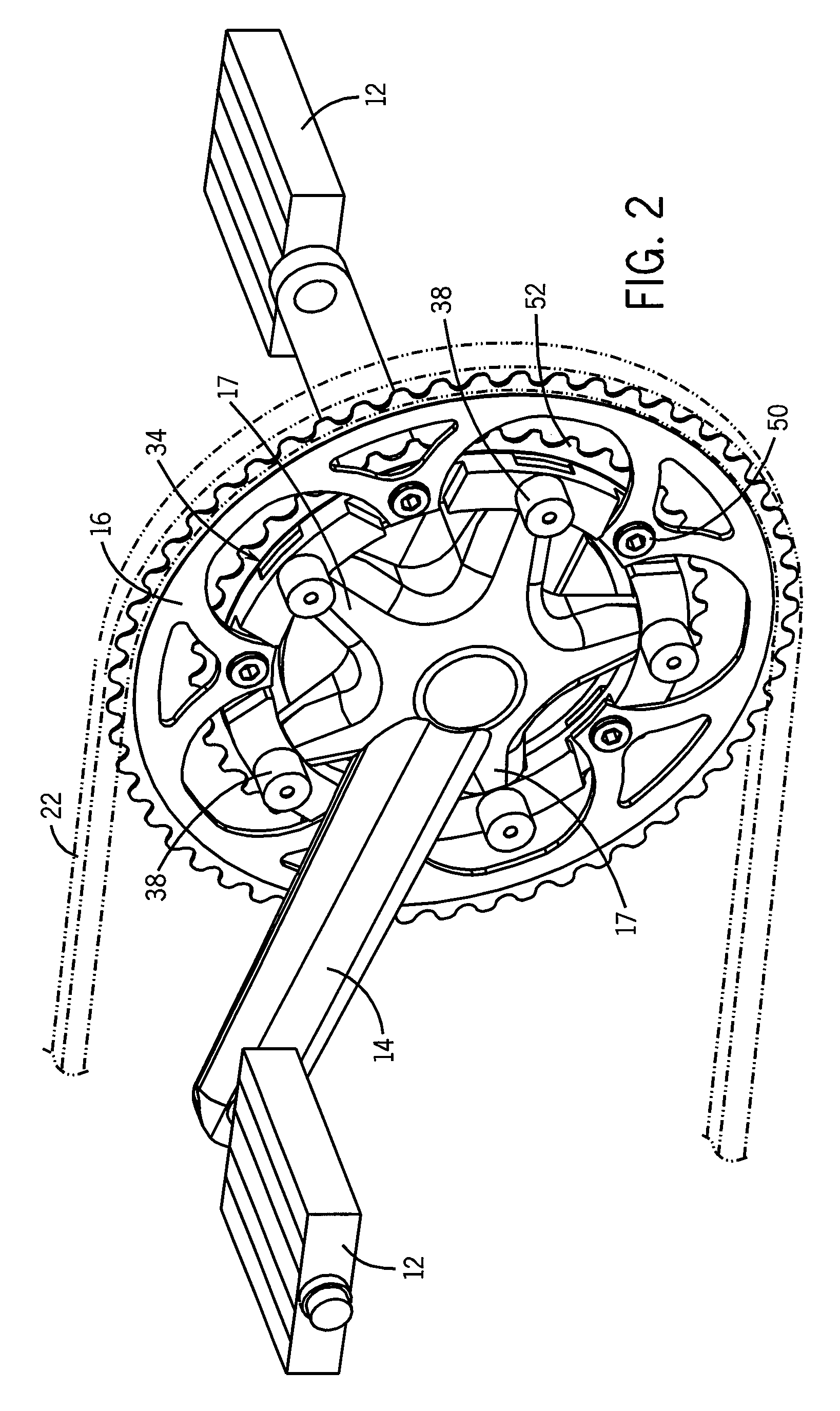Chain ring power sensor for a bicycle
- Summary
- Abstract
- Description
- Claims
- Application Information
AI Technical Summary
Benefits of technology
Problems solved by technology
Method used
Image
Examples
Embodiment Construction
[0031]Referring now to FIG. 1, a bicycle 10 typically includes a pair of pedals 12 connected by a crank arm 14 to a chain ring 16. The chain ring 16 is coupled to the hub assembly 18 of the rear wheel 20 by a chain 22. The bicycle 10 is powered by a cyclist providing rotational forces to the chain ring 16 via the pedals 12 and crank arm 14. The rotation of the chain ring 16 is transferred by the chain 22 to the rear wheel hub assembly 18, which carries the rear wheel 20 into rotation via spokes 24 to drive the bicycle into motion. As is known in the art, the bicycle 10 also includes a front wheel 26 connected to the rear wheel 20 by a frame 28 that includes a seat post 30 and seat 32 for supporting a rider.
[0032]Referring now to FIGS. 2-4, in a conventional bicycle the chain ring 16 is mounted directly to the inner end of the crank arm 14, which is commonly referred to as the “spider” of the crank arm 14, and which defines a series of outwardly extending arms 17. The illustrated cra...
PUM
 Login to View More
Login to View More Abstract
Description
Claims
Application Information
 Login to View More
Login to View More - Generate Ideas
- Intellectual Property
- Life Sciences
- Materials
- Tech Scout
- Unparalleled Data Quality
- Higher Quality Content
- 60% Fewer Hallucinations
Browse by: Latest US Patents, China's latest patents, Technical Efficacy Thesaurus, Application Domain, Technology Topic, Popular Technical Reports.
© 2025 PatSnap. All rights reserved.Legal|Privacy policy|Modern Slavery Act Transparency Statement|Sitemap|About US| Contact US: help@patsnap.com



